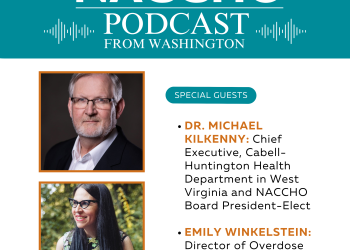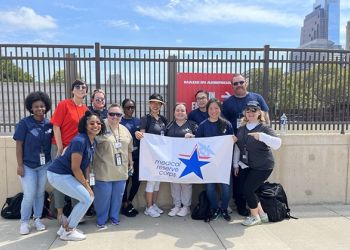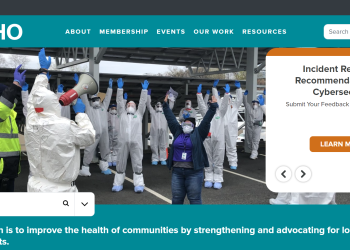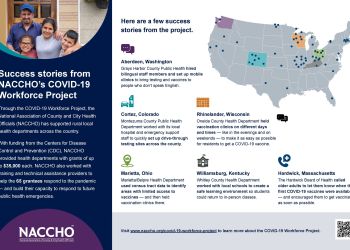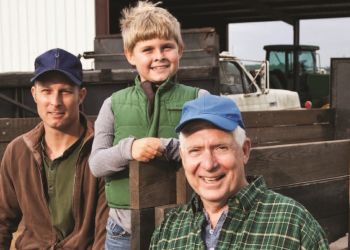This is part of a series of interviews with local health department staff who will present at the 2015 Preparedness Summit. Therese Quinn, Medical Reserve Corps Coordinator, Snohomish Health District, previews her session, “Coordinated Response to Washington State Route 530 Flooding and Slide in Washington State.” At this session, Therese will be joined by John E. Pennington, Director, Snohomish County Department of Emergency Management.
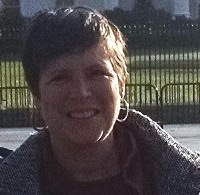 Q: Thank you for agreeing to speak with us about your learning session at the 2015 Preparedness Summit. Can you give a brief overview of what your session will cover?
Q: Thank you for agreeing to speak with us about your learning session at the 2015 Preparedness Summit. Can you give a brief overview of what your session will cover?
Our session will highlight how public health, emergency management, and the Medical Reserve Corps (MRC) worked together to coordinate the response to the 2014 flooding and mudslide in Washington state. John Pennington will be leading the presentation and will provide an overview of what occurred, as well as discuss the role Snohomish County Department of Emergency Management played throughout the response. This session will also demonstrate how the Snohomish Health District and the MRC unit worked in cooperation with other agencies, such as emergency management, to respond to the event.
Q: Who were the critical participants and partners involved in this coordinated response (other than emergency management, public health, and the MRC)?
Almost 350 agencies were involved in the response, however, the MRC did not work closely with all of them. Besides coordinating with local emergency management and public health, the MRC staff and volunteers worked directly with a number of local partners, as well as agencies and organizations at the state, tribal, and federal level. These organizations included the Snohomish County Sheriff’s Office, Medical Examiner’s Office, and emergency medical services, as well as the Sauk-Suiattle Indian Tribe, Green Cross, the Red Cross, Washington State Public Health and Emergency Management, the U.S. Department of Health and Human Services, and local hospitals in three different counties.
Q: Can you elaborate on how the MRC worked with these organizations to coordinate the response?
During the response, the MRC had about 200 volunteers. Of those volunteers, 70 to 80 members were active, while the rest were unable to participate because of work obligations or because they were out of town. Due to the magnitude of this response, the MRC volunteers were asked to staff the emergency call center, as well as provide logistical support to the emergency operations center (EOC). Information gathered from people reporting family members as missing was given to the medical examiner’s office where volunteers assisted in gathering more information from families. MRC mental health providers provided support to community members and responders who were located at the site of the mudslide. The Sauk-Suiattle tribal clinic requested medical staff, so the MRC sent volunteers who were doctors and physician assistants to help support the clinic. As the local MRC coordinator, I worked closely with the Washington Department of Health to communicate what resources were needed to help with the response.
Q: What challenges did the MRC face in regards to the coordination and response of the Washington mudslide?
One challenge for the MRC was that requests for volunteers would continually change. As needs changed, agencies would request volunteers but then cancel, only to request them for a second time. Volunteers began to recognize that during a disaster things have the potential to change quickly and that they have no control over the matter. Instead, MRC volunteers learned to be flexible and adapt to these changes. Another challenge was in regards to tracking individuals who had been rescued and sent to a hospital in one of three counties. Since patient tracking was not initiated in the field, it was challenging to determine which hospital the survivors had been transported to.
Q: What lessons did the local health department and MRC learn during the coordination of the response?
Snohomish Health District is now working on better communication and tracking systems between agencies to help locate individuals sent to hospitals during an emergency. A small number of individuals were transported to hospitals during the mudslide but, if it had become a mass casualty situation, it would have been more challenging for the agencies involved. To help coordinate mental health resources and requests during a disaster, the county developed a mental health plan. This plan will put a process in place making sure all resources are going where they need to be.
Q: For those that attend your session, what do you want participants to learn from your presentation?
I want participants to walk out of the session thinking “wow, I am not going to wait any longer. I am going get in touch with that organization that I have been meaning to for the last year.” I want people to have an understanding of how people communicate and how to build relationships before an emergency occurs. The relationships that both Snohomish County public health and emergency management have within the community helped immensely during the Washington state route 530 flooding and slide. However, these relationships within the community can become even stronger by building new partnerships with different organizations.
Q: What are you looking forward to most about this year’s Preparedness Summit?
During this year’s Summit, I would like to attend some sessions on vulnerable populations, particularly ones looking at social vulnerability. Another topic that I am interested in learning more about is cultural competency in emergency management and response. Networking is another great aspect of the Preparedness Summit. I enjoy meeting other public health responders and hearing about their experiences, how they are planning for an emergency, and to see if I can utilize any of their plans within my community.

